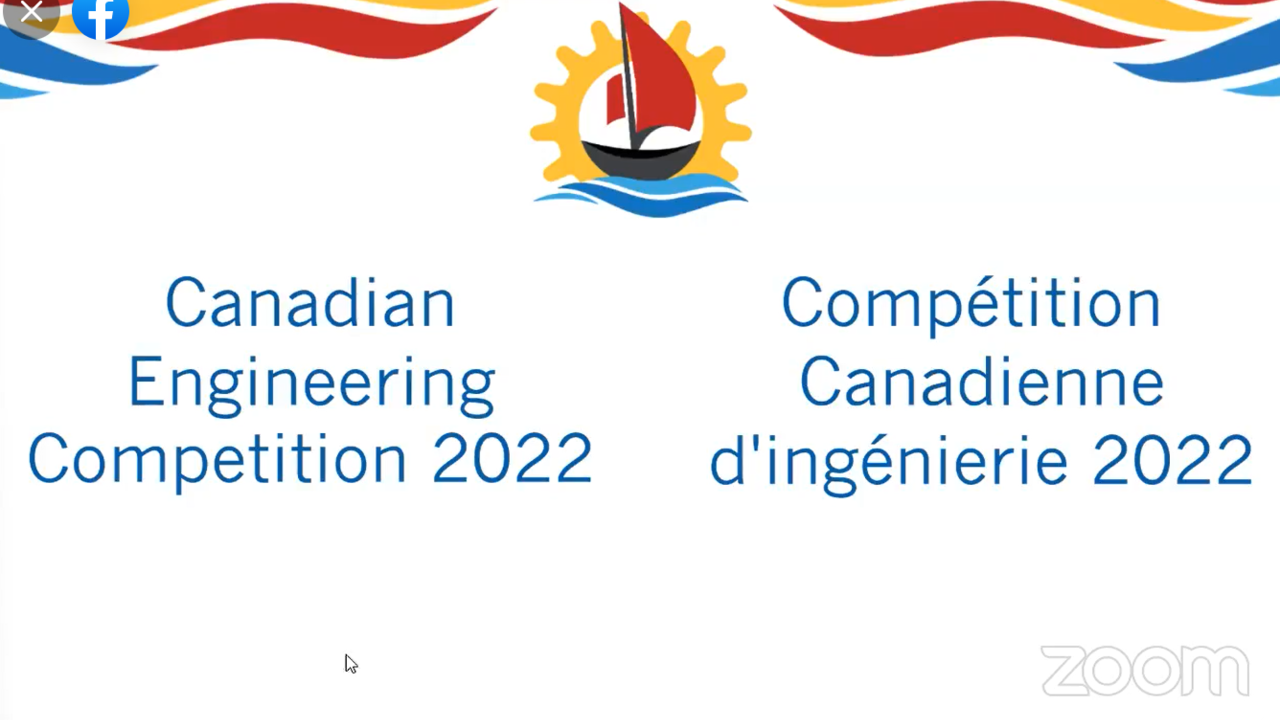
A competitive edge
Students credit success in national competition to immersive learning experience

Students credit success in national competition to immersive learning experience
By Carol Truemner Faculty of EngineeringDemonstrating their impressive engineering design and debating skills, Waterloo Engineering students won the most first-place awards of any school participating in this year’s Canadian Engineering Competition (CEC).
Undergraduate teams captured three top prizes and one third-place finish in the remote competition hosted by the University of New Brunswick this month.
First-year mechatronics engineering students impressed judges with their take on a flood-proofing system winning first in CEC’s Junior Design category.
Simon Gorbet, Alyzen Jeraj, Phoebe Luo and Andy Meng came up with an innovative concept for a series of modular flood barriers capable of protecting homes.
"The competition allowed us to explore a wide range of skills like design, prototyping, engineering and marketing while forcing us to face various challenges and overcome obstacles during the competition," says Meng.
Team members worked toward creating a strong, scalable and reusable product that improves on existing solutions and could potentially be brought to market and benefit millions.
“Using the skills we learned in class such as 3D modelling and component selection, we created something that was not only viable on a subscale prototype but could be used in real life,” says Meng.
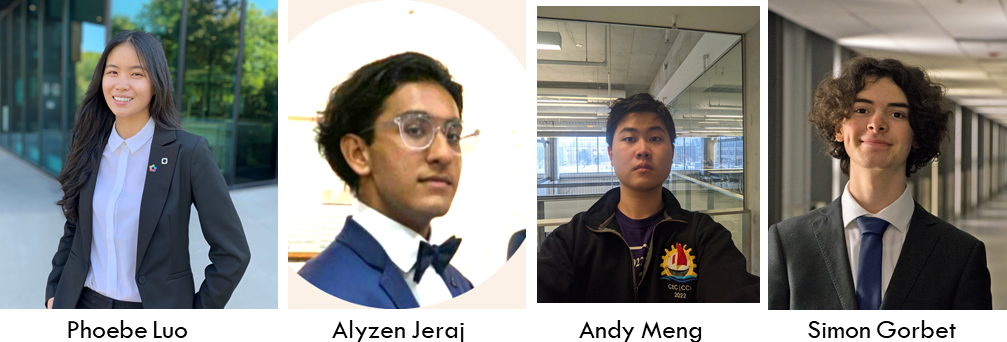
Four biomedical engineering students earned top prize in the Innovative Design category.
Cesar Enrique Genatios, Ankit Jain, Simona Rocco and Laura Zhukas came up with a CAD design for a handheld device with an accompanying mobile app that measures electrocardiogram signals to detect whether a patient has suffered from a myocardial infarction, commonly known as a heart attack.
Timely diagnosis of myocardial infarction is critical as the risk of mortality increases by 7.5 per cent for every 30-minute delay in treatment, says Rocco.
She describes the team’s winning model as portable and low-cost, making it accessible to low-and middle-income countries which have disproportionately higher incidence and mortality rates of myocardial infarction and often lack the necessary diagnostic tools.
Rocco says the CEC award is a testament to the strong engineering and design skills team members have gained from Waterloo’s biomedical engineering program.
“It is also a reflection of how well our education has enabled us to tackle real-world problems with impactful engineering solutions to effect positive change,” says Rocco, whose team also won the WR Petrie Engineering Design Award.
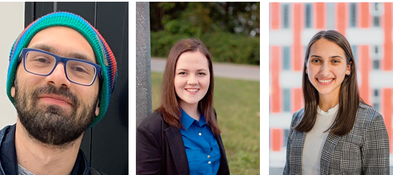
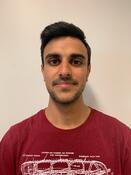
Cesar Enrique Genatios, Laura Zhukas, Simona Rocco and Ankit Jain
Second-year management engineering students Omar Atwa and Omkaar Kamath achieved a first-place finish in CEC’s Re-engineering category in which participants redesigned an existing product or process to either improve functionality or to adapt it for a new purpose.
The two cases Atwa and Kamath were given to re-engineer involved using trash such as plastic and other materials to design something practical.
“The first case required that we construct a structure that would attract tourists and give back to the community using old shipping containers and wind turbines,” he explains.
Instead of designing something fancy, the team members decided to build a simple park.
"Our case however was very detailed - it contained everything from detailed park schematics to park manager salaries and how this park will meet the case goals,” says Atwa.
Taking top prize in the CEE’s Re-engineering category was particularly meaningful for the two men after not placing in the seven competitions they entered throughout their first year.
“We did not come close to winning any but we learned at every step,” says Atwa. “I guess the lesson here is that the more times you fail the more likely you'll succeed if you keep trying.”
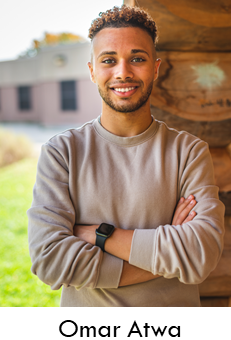
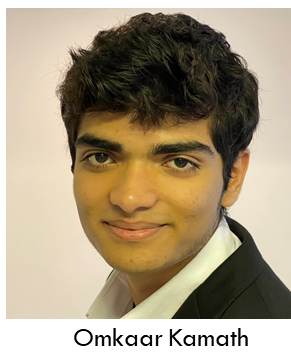
Sean Ashley and Anson Yu, both systems design engineering students, and Ella Uppal, a computer engineering student, took third place in CEC’s Extemporaneous Debate category.
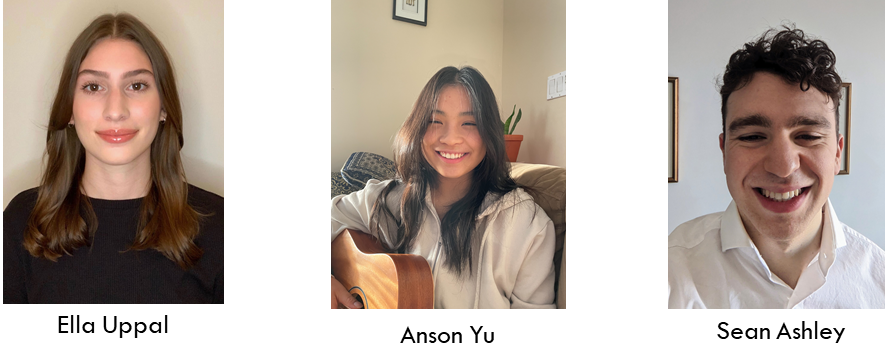
The annual CEC brings together over 200 undergraduate students from across Canada who placed in the top two positions of their provincial or regional competitions. Next year's CEC will be hosted by Waterloo Engineering.

Read more
Here are the people and events behind some of this year’s most compelling Waterloo stories

Read more
Waterloo Engineering community honours impact and innovation at annual awards dinner

Read more
Meet five exceptional Waterloo graduate students crossing the convocation stage as Class of 2025 valedictorians
The University of Waterloo acknowledges that much of our work takes place on the traditional territory of the Neutral, Anishinaabeg, and Haudenosaunee peoples. Our main campus is situated on the Haldimand Tract, the land granted to the Six Nations that includes six miles on each side of the Grand River. Our active work toward reconciliation takes place across our campuses through research, learning, teaching, and community building, and is co-ordinated within the Office of Indigenous Relations.